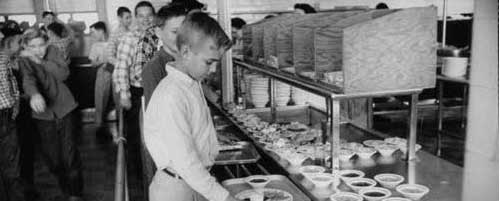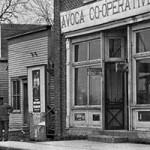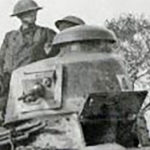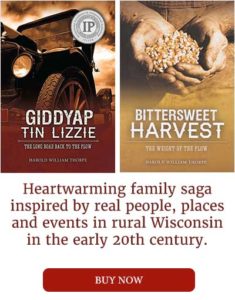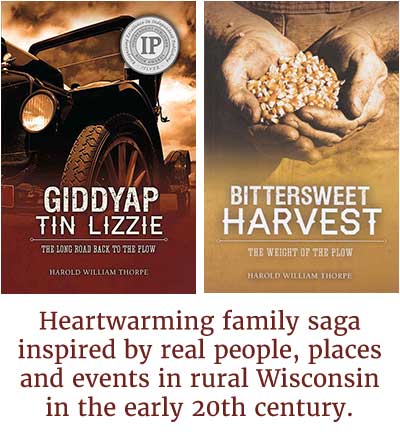“Alice and I always walked home from school for dinner at noon. Sometimes there would be a blizzard and Emma would call us in for Cornish pasties. That saved us a long walk in the storm, since she lived about halfway to our house.” – From High on the Bluff
Early in the twentieth century, most children either walked home for lunch or carried their lunch in a pail with them to school. School lunches were changing, however.
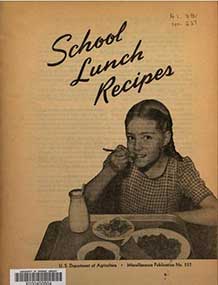 Women’s magazines after the turn of the century offered ideas for packing lunches that were more appealing. And even before the Federal School Lunch Program was created in 1946, schools were experimenting with hot cafeteria lunches. These began as penny lunches – two cents for bread and butter, five cents for a bowl of soup.
Women’s magazines after the turn of the century offered ideas for packing lunches that were more appealing. And even before the Federal School Lunch Program was created in 1946, schools were experimenting with hot cafeteria lunches. These began as penny lunches – two cents for bread and butter, five cents for a bowl of soup.
Early hot lunch cafeterias often relied on surplus farm food. Their big challenge was to turn it into something appealing to children, that could be cooked on a large scale and be affordable to serve.
The U.S. Department of Agriculture tried to help by sending schools booklets explaining how to set up and run a hot cafeteria, complete with needed equipment lists, floor layouts, sample menus and recipes. Creamed liver and potatoes, anyone? Cheese Bunny? Scalloped Apples for 50?
Below is a 1936 U.S. Department of Agriculture recipe for Peanut Butter and Tomato Soup, designed to feed 52 children, from a publication entitled Menus and Recipes for Lunches at School.
Peanut Butter and Tomato Soup
4 no. 10 cans of tomatoes (about twelve quarts)
10 ounces (2-1/2 cups) of flour
3 pounds of peanut butter
½ pound of peeled onions, chopped
2 tbsp. of salt
Press the canned tomatoes through a sieve to remove the seeds.
Mix two quarts of the strained tomato, the flour, and the peanut butter until smooth. A
dd the onions to the remaining tomato and heat to the boiling point.
Add some of the hot tomato to the flour and peanut butter, then combine with the hot tomato. Add the salt.
Cook for about ten minutes, stirring constantly.

